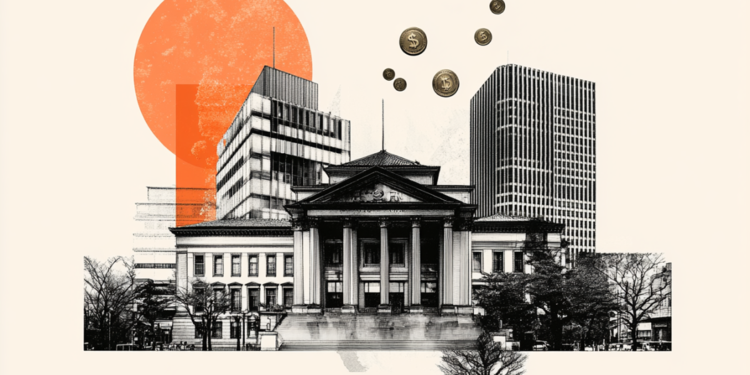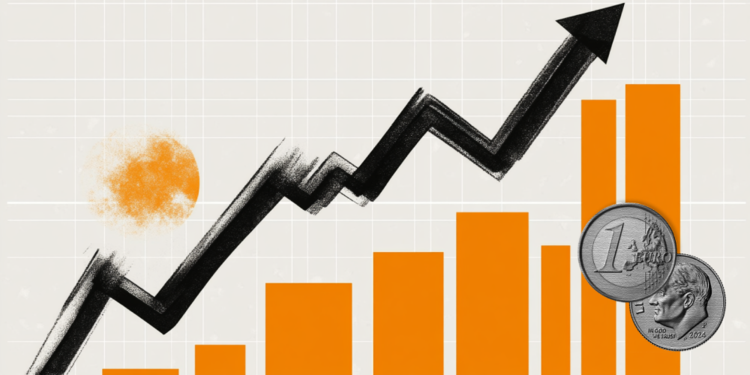- Japanese Yen fails to capitalize on overnight strength amid uncertainty over BoJ rate hike.
- A positive risk tone also undermines the JPY, although weak USD demand helps limit losses.
- The fundamental background suggests that the path of least resistance for the JPY is to the downside.
The Japanese Yen (JPY) struggles to attract significant buyers during the Asian session on Friday, with the USD/JPY pair holding just below its highest level since early August touched the previous day. A drop in Japan’s real wages for the first time in three months, a decline in household spending and signs that price pressures from raw material costs were easing raised doubts over rate hike plans. from the Bank of Japan (BoJ). This continues to undermine the JPY ahead of Japan’s snap elections on October 27 and turns out to be a key factor acting as a tailwind for the currency pair.
Meanwhile, the market’s initial reaction to higher-than-expected US consumer inflation figures released on Thursday turned out to be short-lived amid indications of weakness in the labor market. As the Federal Reserve (Fed) has shifted its focus toward achieving maximum sustainable employment, an increase in US jobless claims suggested that the US central bank will continue to cut interest rates. This keeps US Dollar (USD) bulls on the defensive, below a nearly two-month high set the previous day, and caps the USD/JPY pair as traders await the release of the Producer Price Index (PPI). ) from USA
Daily Market Summary: Japanese Yen Draws Support from Falling USD Price, Not Out of the Woods Yet
- Expectations that the Bank of Japan will not rush to raise borrowing costs are not helping the Japanese yen capitalize on its modest recovery against the US dollar, from a more than two-month low hit on Thursday.
- Furthermore, political uncertainty ahead of the October 27 snap elections in Japan, coupled with a generally positive risk tone, could undermine demand for the JPY and continue to act as a tailwind for the USD/JPY pair.
- The US dollar hit its highest level since mid-August after the US Department of Labor reported that the core Consumer Price Index, which excludes food and energy prices, rose 3.3% year-on-year in September .
- Meanwhile, headline CPI rose 2.4% in the 12 months to September versus 2.3% expected. However, this was down from 2.5% in August and also the smallest year-on-year increase since February 2021.
- Additionally, the number of Americans filing for unemployment benefits increased by 33,000 to a seasonally adjusted level of 258,000 for the week ending October 5, pointing to initial signs of weakness in the US labor market.
- Investors now appear convinced that the Federal Reserve will continue to cut interest rates, keeping USD bulls on the defensive ahead of the upcoming US Producer Price Index (PPI) release. later this Friday.
Technical Outlook: USD/JPY looks set to resume its recent uptrend and aim to reclaim the psychological 150.00 mark
From a technical perspective, last week’s move beyond the 50-day SMA for the first time since mid-July and acceptance above the 38.2% Fibonacci retracement level of the July decline to September favor the bulls. Furthermore, the oscillators on the daily chart have been gaining positive traction and are far from being in overbought territory, suggesting that the path of least resistance for the USD/JPY pair is to the upside. Therefore, any subsequent decline is more likely to attract new buyers and should remain capped near the 148.00 mark.
The latter should act as a fundamental point, which if broken could trigger some technical selling and drag the USD/JPY pair to the intermediate support of 147.35 en route towards the 147.00 mark and the 146.50 zone. On the upside, the round figure of 149.00 now appears to act as an immediate hurdle ahead of the overnight high, around the 149.55-149.60 region, above which the bulls could aim to reclaim the psychological mark of 150.00. The momentum could extend further towards the 50% Fibonacci level, around the 150.75-150.80 region.
The Japanese Yen FAQs
The Japanese Yen (JPY) is one of the most traded currencies in the world. Its value is determined broadly by the performance of the Japanese economy, but more specifically by the policy of the Bank of Japan, the differential between the yields of Japanese and US bonds or the risk sentiment among traders, among other factors.
One of the mandates of the Bank of Japan is currency control, so its movements are key for the Yen. The BoJ has intervened directly in currency markets on occasion, usually to lower the value of the Yen, although it often refrains from doing so due to the political concerns of its major trading partners. The BoJ’s current ultra-loose monetary policy, based on massive stimulus to the economy, has caused the depreciation of the Yen against its main currency pairs. This process has been exacerbated more recently by a growing policy divergence between the Bank of Japan and other major central banks, which have opted to sharply raise interest rates to combat decades-old levels of inflation.
The Bank of Japan’s ultra-loose monetary policy stance has led to increased policy divergence with other central banks, particularly the US Federal Reserve. This favors the widening of the spread between US and Japanese 10-year bonds, which favors the Dollar against the Yen.
The Japanese Yen is often considered a safe haven investment. This means that in times of market stress, investors are more likely to put their money in the Japanese currency due to its supposed reliability and stability. In turbulent times, the Yen is likely to appreciate against other currencies that are considered riskier to invest in.
Source: Fx Street
I am Joshua Winder, a senior-level journalist and editor at World Stock Market. I specialize in covering news related to the stock market and economic trends. With more than 8 years of experience in this field, I have become an expert in financial reporting.







